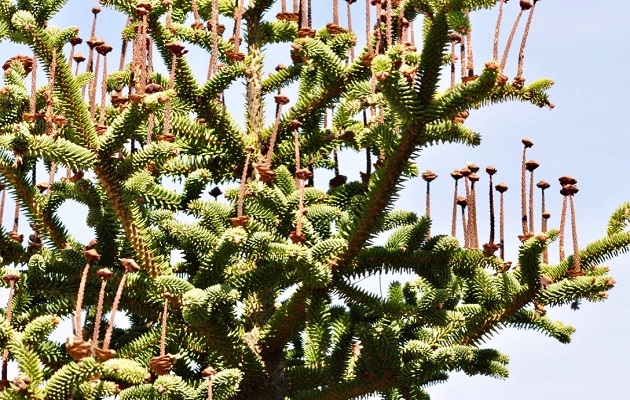As a relict species it has only managed to survive on a handful of isolated mountain-tops.
 A Spanish fir.
A Spanish fir.
One of the most unique and fascinating types of fir tree in Spain is the Spanish fir (Abies pinsapo), which only grows in very specific locations in the Andalusian mountains, such as the Las Nieves range (Ronda), the Pinar range (Grazalema) and the Bermeja range (Genalguacil and Casares). It is therefore endemic in the regions that are characterised by their mountain/Mediterranean climate with abundant rainfall. As a relict species, characteristic of other colder periods, it has only managed to survive on a handful of isolated mountain-tops. They are considered to be a species in danger of extinction, especially on account of the risk of fire, overgrazing, their isolation, changes to their habitat, the risk of diseases caused by certain species of fungus or insects, as well as the possibility of unwanted hybridization from other fir species.
This latter risk of genetic contamination is due to the commercialisation of popular Christmas trees. The Spanish fir hybridizes with the European silver fir (Abies alba), resulting in another species of fir, capable of producing some sterile cones but also fertile ones. When seeds from the latter fall to the ground and germinate they give rise to small firs with more leaves or needles than the common fir, although fewer than the Spanish fir. This makes this particular fertile hybrid more attractive Christmas tree and one that is therefore more popular among western consumers. If the leaves or needles of the Spanish fir are inserted helically into the branches, over an area of 360 degrees, and those of the common fir are projected in only two directions, those of the hybrids are usually halfway between, over an area of 270 degrees.
It is curious to notice that what constitutes a risk for the defenders of the genetic purity of the Andalusian firs turns out to be a blessing for those who manage to obtain hybrids from these trees in the southernmost regions of the Iberian peninsula. That is precisely what happens in Catalonia, in certain forests in the Montseny massif, where there are a number of different monumental trees that were planted in the mid 20th century.
During the 1950s natural hybridization occurred between the common Montseny fir (Abies blanca) and the Andalusian fir, or Spanish fir (Abies pinsapo). The name that was given to the resulting hybrid was that of the nearby Masjoan country house, or ‘masia’, Abies masjoanis. Now, the Arboretum Masjoan de Espinelves (the Masjoan Arboretum of Espinelves) in Girona exhibits examples of this tree alongside other majestic ancient American redwoods, cedars of Lebanon and from the Himalayas, fir trees from Vancouver, among other pines, cedars oak trees, etcetera, which together constitute a uniquely beautiful forest for nature tourism.
This botanical subject recalls age-old social debates between those defending the purity of human races or those who support hybridization and mixing. No one believes in the concept of ‘race’ any longer, especially since genetic science has shown it to be false and has demonstrated that hybridization is a source of enrichment, while endogamy causes diseases. As the evangelist St Luke writes: And [God] made of one blood all nations of men for to dwell on all the face of the earth (Acts 17:26). However, in a world of vegetation in danger of extinction, like our priceless Spanish fir, we must do our best to conserve the purity of the species.

Las opiniones vertidas por nuestros colaboradores se realizan a nivel personal, pudiendo coincidir o no con la postura de la dirección de Protestante Digital.
Si quieres comentar o